Can dogs eat kiwi? Yes, kiwi is a healthy and refreshing snack for dogs. This sweet and tangy tropical fruit is packed with fiber, antioxidants, and nutrients like vitamin E, folate, and potassium, offering numerous health benefits to dogs.
Kiwi is a dog-friendly fruit, so you can share some with your pooch! However, before doing so, there are some parts of kiwi that you should leave out. Continue reading to find out what these are.
Are kiwis good for dogs?
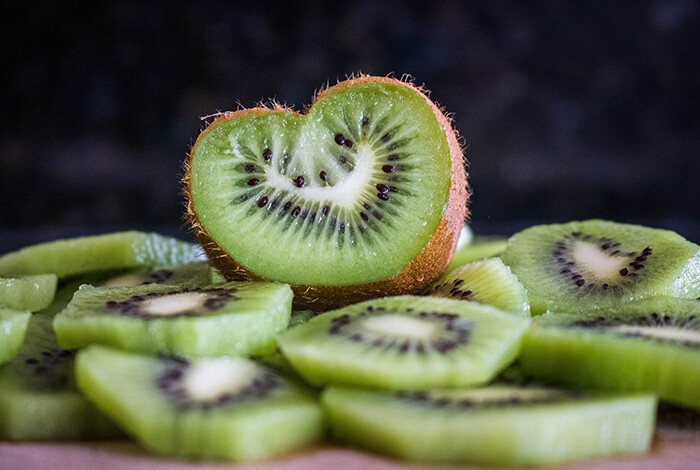 Kiwi is not only a refreshing, tasty fruit, but it’s also healthy. It has high levels of soluble fiber and water content, making it a good low-calorie training treat for dogs. Moreover, the fruit is rich in vitamins and minerals. These include beta-carotene, vitamin E, vitamin K, folate, and potassium.
Kiwi is not only a refreshing, tasty fruit, but it’s also healthy. It has high levels of soluble fiber and water content, making it a good low-calorie training treat for dogs. Moreover, the fruit is rich in vitamins and minerals. These include beta-carotene, vitamin E, vitamin K, folate, and potassium.
Health benefits for your dog: nutrients at work:
- Keeping the dog’s immune system strong
- Giving the body the ability to fight cancer
- Aiding your dog’s digestion and promoting a healthy stomach
- Helping in blood clotting and fast healing
- Providing extra hydration to your dog
- Reducing the swelling and irritation due to kiwi’s anti-inflammatory properties
If you are looking for a fruit treat for your dog, add kiwi to your list. Your dog can reap numerous nutritional benefits by eating kiwi. But be sure to consult the vet first before deciding to include kiwi in your dog’s diet.
Can dogs have kiwi? Is kiwi safe for dogs to eat?
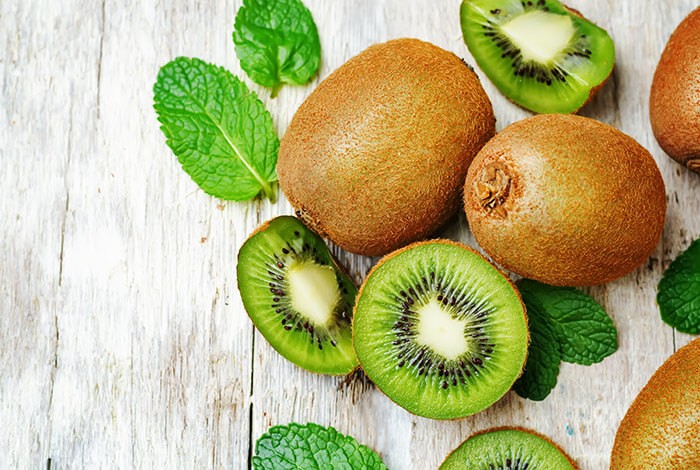 Kiwi is non-toxic to dogs compared to other fruits like grapes. But there are a few things that you need to know before sharing kiwi with your dog.
Kiwi is non-toxic to dogs compared to other fruits like grapes. But there are a few things that you need to know before sharing kiwi with your dog.
Never feed your dog a whole kiwi fruit, especially if he is a small dog breed. These can easily get lodged in his throat and cause choking.
Even if he managed to swallow the whole fruit, there is still the danger of stomach blockage. His gastrointestinal tract will have great difficulty digesting the entire kiwi.
Your dog will likely require surgery to extract the fruit from his stomach. Without immediate treatment, his condition could turn fatal. That’s why you always slice kiwi into small bite-size pieces when preparing it for your dog.
The fruit also contains natural sugar, which is not beneficial for Fido. It is more likely to give him periodontal problems, lead him to gain weight, or develop diabetes.
Another thing to know about kiwi is that it contains actinidin, an enzyme that causes mouth and tongue irritation.
How much kiwi can dogs eat?
Kiwi is safe for dogs to consume, but portion control is a must. If your dog is a small or mid-sized breed, he can eat a slice of kiwi a day. Larger dogs can have two to three pieces of kiwi each day.
Many dogs cannot tolerate sudden dietary changes. Hence, always start by giving your dog small amounts of kiwi to avoid digestive upset. If he doesn’t show signs of stomach problems, you can slowly increase the fruit portions. Just be sure not to go beyond the advised serving for your pet.
Kiwi is full of soluble fiber and dietary enzymes. These fruit components have a laxative effect on canines if there’s too much of it in their digestive system. Therefore, if you feed your dog too much kiwi, he will end up experiencing gas, diarrhea, and constipation.
Can kiwi cause an allergic reaction in dogs?
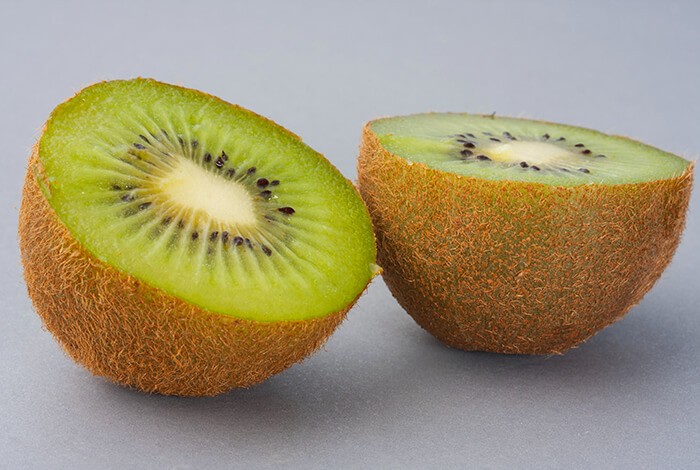 Kiwi isn’t one of the most common triggers of food allergies in dogs. Regardless, it is always a good idea to be cautious. If it’s your dog’s first time eating kiwi, give him the fruit in small amounts.
Kiwi isn’t one of the most common triggers of food allergies in dogs. Regardless, it is always a good idea to be cautious. If it’s your dog’s first time eating kiwi, give him the fruit in small amounts.
Then, lookout for signs of allergic reactions, such as diarrhea, vomiting, itchiness, inflamed skin, and upset stomach. These symptoms may often take about twenty-four hours to appear.
If your dog exhibits signs of allergies, stop serving kiwi and get him checked by the vet immediately.
The vet will perform various tests on your dog to determine what caused the symptoms. If it is proven that kiwi is the root of it all, consider looking for other alternative treats for him.
What parts of the kiwi are bad for dogs?
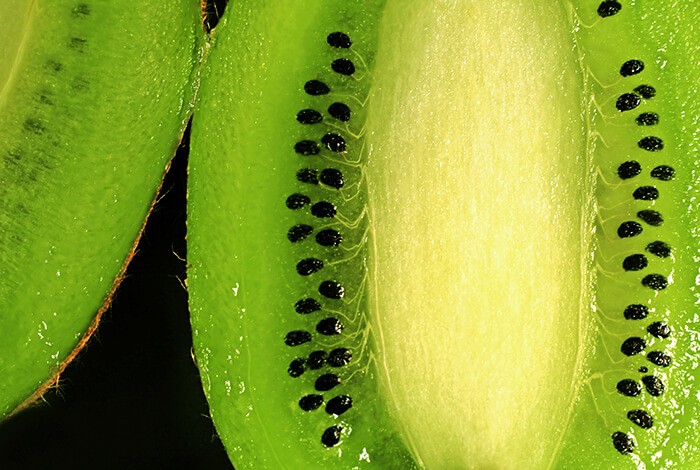 Dogs can eat the fleshy parts of the kiwi. However, some other parts of the fruit are best left out.
Dogs can eat the fleshy parts of the kiwi. However, some other parts of the fruit are best left out.
Can dogs eat kiwi seeds?
No, do not feed kiwi seeds to your pooch. Many believe that kiwi seeds contain toxins that can cause poisoning in dogs. To keep your dog safe, make sure to remove the seeds as you prepare the fruit.
Can dogs eat kiwi peels?
Some fruits’ peels are high in vitamins and minerals, which are okay for dogs to eat. Unfortunately, this is not the case for Kiwis. Its skin contains high levels of roughage or insoluble fiber.
Allowing your dog to eat kiwi skin will potentially cause an upset stomach or diarrhea. Moreover, its tough texture is a potential choking hazard. Thus, it would be best to peel off the skin before feeding the kiwi to your dog.
How to properly prepare kiwi for dogs
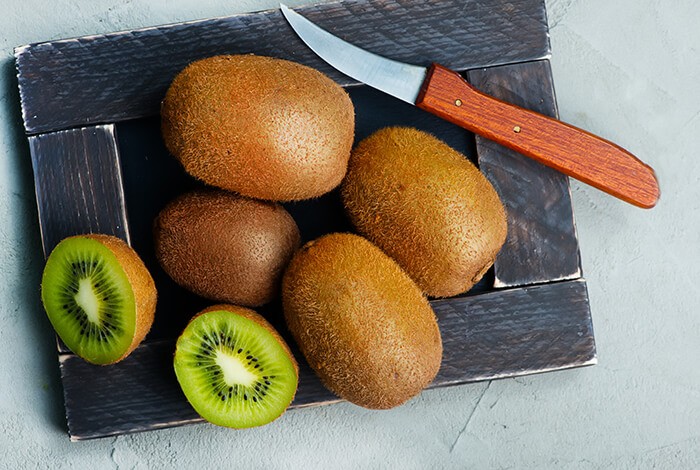 Here are some guidelines to remember while preparing kiwi for your furry friend:
Here are some guidelines to remember while preparing kiwi for your furry friend:
Ask the vet’s advice first to ensure that the fruit fits your dog’s dietary needs.
Buy organic kiwi since it has less exposure to harmful chemicals such as pesticides.
Wash the fruit thoroughly before removing the skin and seeds.
Slice kiwi into small pieces to prevent your dog from choking on it as he eats.
You can feed it to your dog raw, mashed, or as a topping on his dog food.
Always remember to set limits on the amount of kiwi that your dog can eat to avoid an upset stomach and other health problems.
Home-made Kiwi Dog Treats
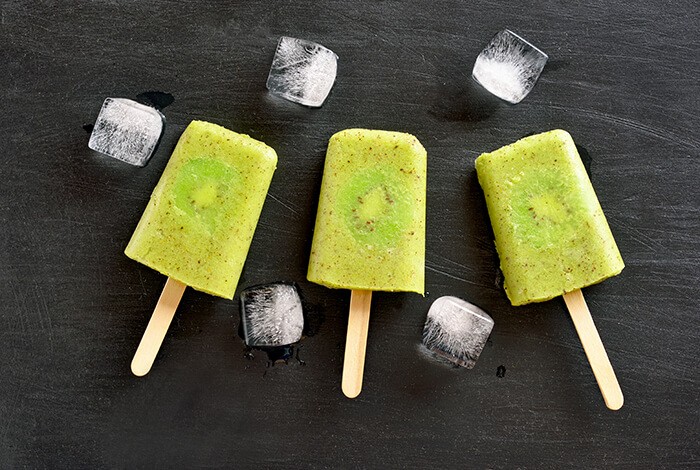
 Kiwi Pupsicle
Kiwi Pupsicle
Ingredients
- 1 cup kiwis, skin removed and chopped
- 1 cup fresh peaches, skin and pit removed and cut into small pieces
- 1 1/2 cups coconut water
Procedures:
- In a blender or a food processor, puree the peaches, kiwis, and coconut water until smooth.
- Pour the blended mixture into ice cube trays or molds.
- Allow the treats to freeze for up to eight hours to set fully.
- Run warm water around the mold to remove the pupsicles.
Serve it to your pooch.

